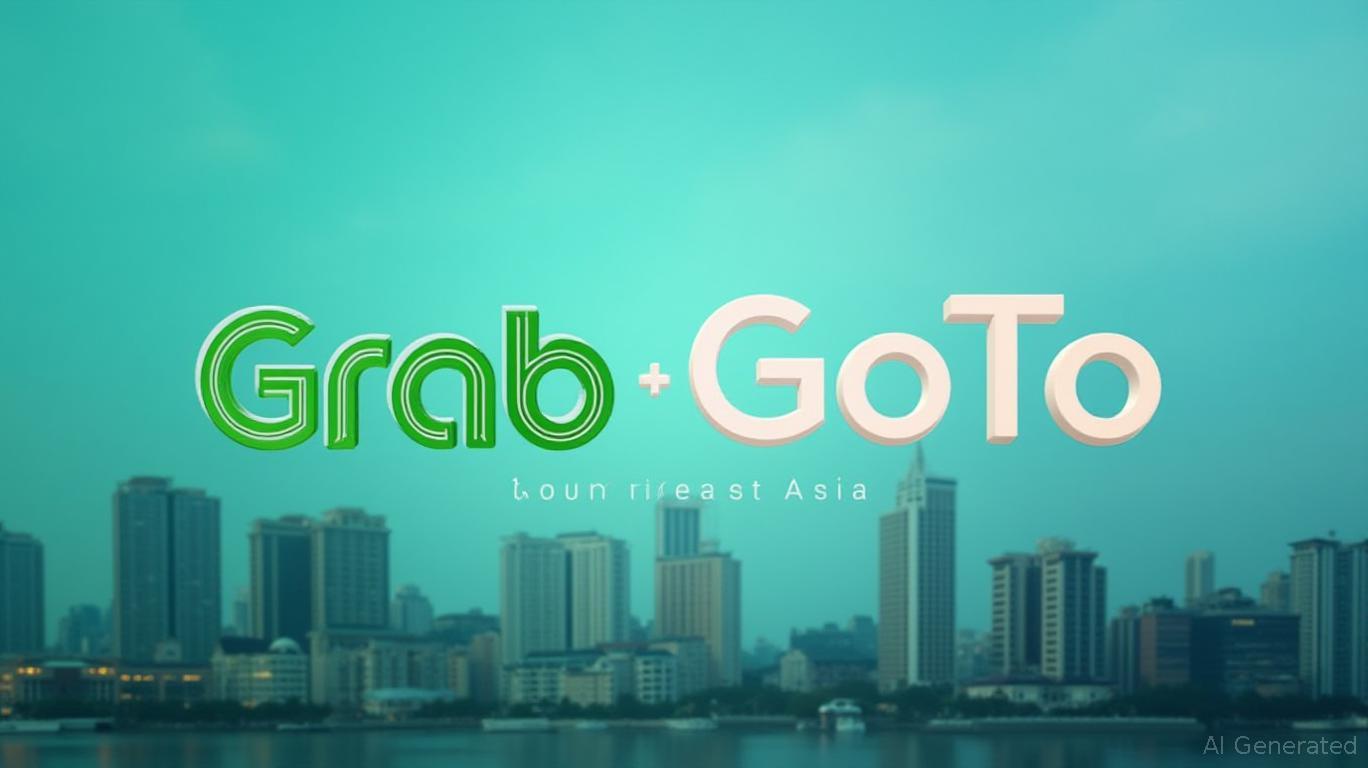Grab's Bold Move to Acquire GoTo: Navigating Regulatory Risks for Southeast Asia Dominance
The digital economy of Southeast Asia is on the
of a landmark consolidation as Grab, Singapore's ride-hailing giant, eyes a $7 billion acquisition of Indonesia's GoTo Group. This deal could reshape the region's tech landscape, but its success hinges on navigating Indonesia's antitrust scrutiny and leveraging strategic partnerships. For investors, the stakes are high: a successful merger could cement Grab's dominance in Southeast Asia's $1.3 trillion digital economy, while missteps could amplify regulatory and competitive risks. Let's dissect the regulatory hurdles, valuation upside, and strategic synergies at play.
Regulatory Risks: Danantara's Stake as a Shield or a Sword?
Indonesia's antitrust agency (KPPU) has raised red flags over the merged entity's potential 80% market share in Singapore's ride-hailing sector—a red line for competition regulators. However, in Indonesia itself, the combined market share drops to 11% when broader transportation services are considered, easing immediate concerns. This nuance underscores a critical point: regulatory outcomes depend on how Grab structures the deal and addresses geographic overlaps.
Enter Danantara, Indonesia's sovereign wealth fund. The fund is considering a minority stake in the merged entity, a move that could act as a “government backstop” to quell nationalistic fears of foreign control. While critics argue Danantara's dual role as investor and regulator could distort competition, its involvement may be the key to securing KPPU approval. Nailul Huda of Celios warns of monopolistic risks, but the strategic calculus favors Grab: Danantara's stake could neutralize political pushback while diluting Grab's equity exposure.
Valuation Upside: A Discounted Titan or a Mispriced Gem?
Grab's valuation metrics paint a mixed picture. Its trailing P/E ratio is a stark 0.0x, reflecting minimal profitability, while its forward P/E of 180.7x hints at lofty growth expectations. Yet, its EV/EBITDA 2Y Forward multiple of 5.2x (vs. a peer median of 39.2x) suggests it's deeply undervalued relative to rivals like Uber and DiDi.
This discount is puzzling given Grab's recent operational wins: - Revenue grew 18.4% YoY to $773 million in Q2 2025, driven by fintech and food delivery.- Adjusted EBITDA guidance was raised to $460–480 million, up from $440–470 million, signaling margin discipline.- Monthly transacting users rose 17% YoY, with cross-selling across its “super-app” ecosystem.
The “Very Negative” analyst revisions score (7/100) reflects skepticism about execution risks, but the fundamentals are improving. If Grab can sustain EBITDA growth and achieve its 2026 target of $644 million profit, its valuation could snap back sharply.
Core Market Synergies: Indonesia as the Prize, Singapore as the Minefield
The deal's success hinges on two markets:
1. Indonesia: GoTo's home turf offers Grab a foothold in the region's largest digital economy. Synergies here include combining GoTo's strong payments platform (link) with Grab's ride-hailing dominance.
2. Singapore: Here, the merged entity risks triggering a “too big to fail” backlash. With an 80% ride-hailing share, Grab may need to divest assets (e.g., sell GoTo's Singapore operations) to pass scrutiny.
The broader opportunity lies in cross-selling: bundling Grab's transport network with GoTo's e-commerce and financial services could create a “one-stop” platform for Southeast Asia's 700 million consumers. However, execution is everything—poor integration could squander this potential.
Risks: Populism, Competition, and Execution
- Regulatory Populism: Governments may impose asset sales or equity caps to “protect” local champions. Danantara's involvement could mitigate this but isn't a guarantee.
- Competitor Pushback: Rival apps like Gojek (now part of Sea Group) or local fintechs might lobby regulators to block the deal.
- Margin Pressures: Grab's mobility segment still faces cost challenges, while fintech credit provisions remain a drag.
Investment Thesis: Long Grab with Eyes Wide Open
Buy the dip: Grab's stock trades at $5.17, below its $7.15 price-to-sales multiple and with $6.2 billion in cash. The Danantara stake and regulatory clearance are key catalysts to watch. If the deal proceeds by Q2 2025 (as targeted), the stock could rally to $8–$10.
Hold for the long term: The Southeast Asia digital economy is consolidating, and Grab's scale advantages (13M+ drivers, 200M users) make it a natural leader. Even a partial success could unlock value.
Risks to avoid: Overpaying now or ignoring execution red flags (e.g., failed synergies, margin erosion).
Final Take
Grab's acquisition of GoTo is a high-stakes gamble—but one worth taking. With Danantara's potential stake acting as a regulatory shield and its undervalued stock offering a margin of safety, the upside for investors is compelling. The path forward is fraught with regulatory landmines, but in a sector ripe for consolidation, Grab has the scale and strategy to dominate. For now, long Grab equity looks like a bet on the future of Southeast Asia's digital economy.
Final Call: Hold until regulatory clarity emerges, then buy on dips toward $6.50. Set a $10 price target with a $4 stop-loss.
Data as of June 6, 2025. Past performance ≠ future results. Consult your financial advisor before investing.

Comments
No comments yet